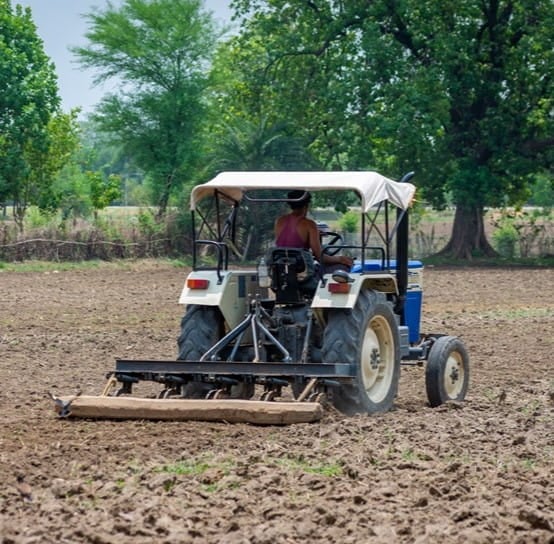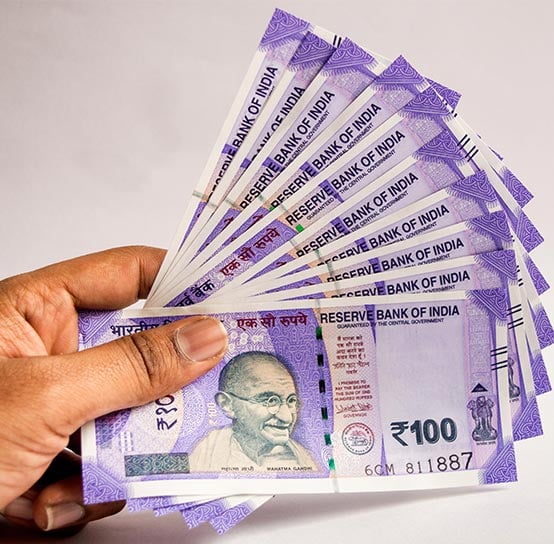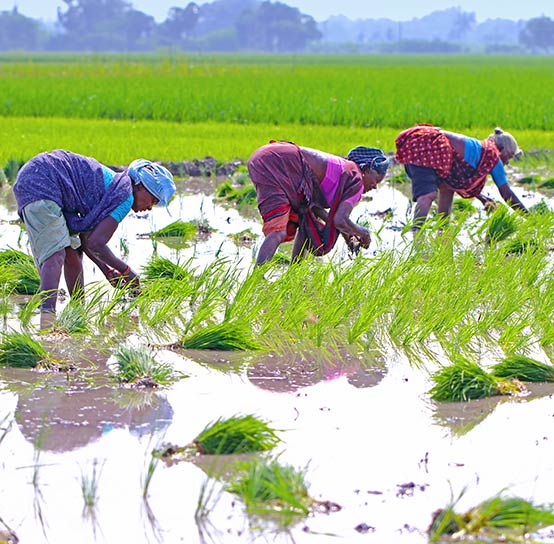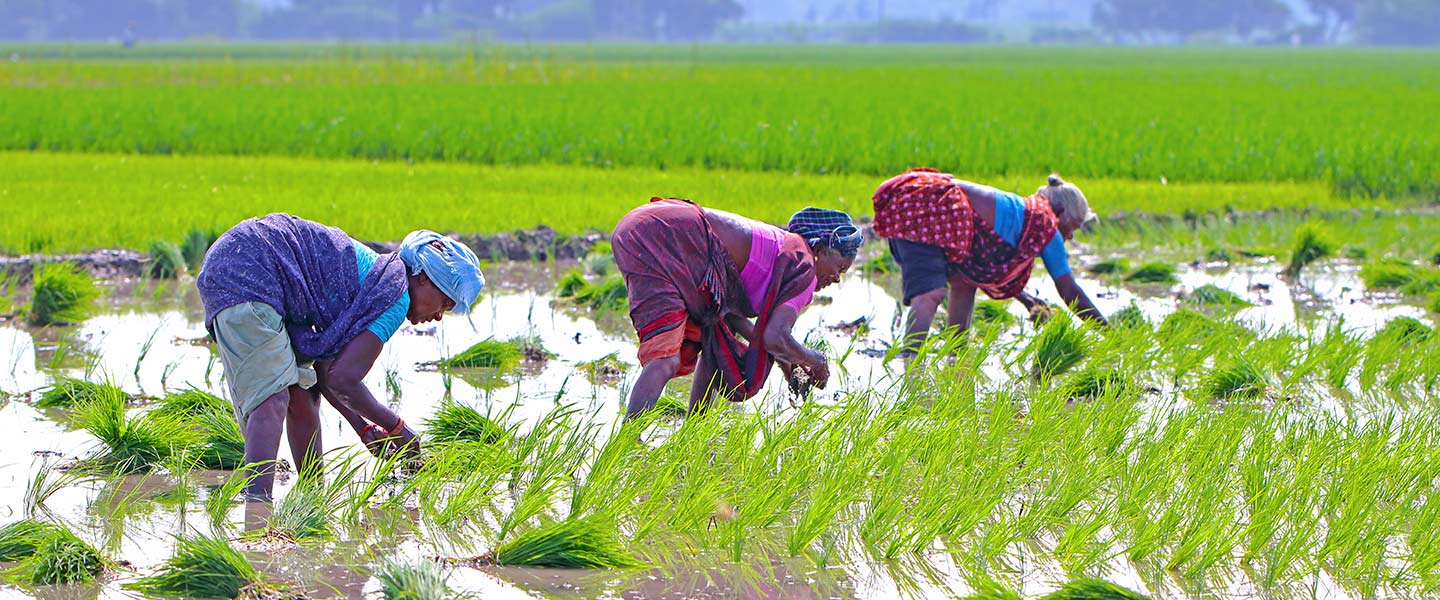-
Digital Natives
Unlock growth with Grant Thornton Bharat's Digital Natives solutions. Customised support for tech-driven companies in healthcare, gaming, and more.
-
Business Consulting
Our business consulting specialists offer a comprehensive blend of strategic advisory services. We assess the business, industry, operating model, synergy, skill sets and vision of the organisation and recommend the way forward
-
Digital Transformation Services
Grant Thornton’s digital transformation services help traditional businesses digitalise their business models with cloud technology, IoT consulting, app development and more DigiTech solutions.
-
Human Capital Consulting
Our Human Capital Consulting team harnesses technology and industry expertise to assist in constructing adaptable organisations with transparency, fostering productive and value-driven workforces, and inspiring employees to engage meaningfully in their tasks.
-
Production Linked Incentive Scheme
Production-linked Incentive Scheme by the Indian government is aimed at boosting manufacturing. Grant Thornton Bharat offers varied services across sectors to help businesses avail of this scheme.
-
Public Sector Advisory
Our Public Sector Advisory team has focused streams, aligned with the core priorities of the Government of India. We are responsible for providing innovative and customized technical and managerial solutions.
-
Tech Advisory
We have amalgamated Digital Transformation, IT Advisory & Information Management and Analytics into a new offering, DigiTech.
-
Direct Tax services
Our tax specialists offer a comprehensive blend of tax services, tax litigation, regulatory and compliance services, helping you navigate through complex business matters.
-
Indirect Tax Services
Get tax services by leading tax firm Grant Thornton India. Our indirect tax services include consulting, compliance and litigation services for corporate, international and transaction tax
-
Transfer pricing services
Our transfer pricing services experts provide a range of services from provision of APA services to handling large global assignments including Country by Country reporting.
-
US Tax
At Grant Thornton, we help individuals and dynamic companies deal with US tax laws, which are one of the most complicated tax legislations across the world.
-
Financial Services - Tax
Best financial advisory services, tailored for small and large businesses by the experts having comprehensive knowledge of domestic laws and access to multifaceted tools to provide a valuable results.
-
Financial Reporting consulting services
Our experts have significant hands-on experience in providing IFRS/US GAAP services, end-to-end solutions and support services to fulfil financial reporting requirements.
-
Fund accounting and financial reporting
International operations often lack standardisation and have varied local reporting formats and requirements. Our experts can offer proactive insights, practical guidance, and positive progress and help meet regulatory timeframes.
-
Compliance and Secretarial Services
Our experts can assist in overhauling the entire compliance machinery of the organisation through evaluation of the applicable statutory obligations, monitoring of adequate governance controls, reporting and providing ongoing support.
-
Global People Solutions
As businesses transcend borders, both domestic and global considerations need equal attention. Our interim CFO and financial controller support services help organisations meet the business vision.
-
Finance and accounting outsourcing
Our accounting experts assist organisations in managing their accounting and reporting. Our dedicated Integrated Knowledge and Capability Centre (IKCC), allows us to service both the domestic and global markets efficiently and cost-effectively
-
Compliance Management System
We have automation solutions for you that will allow meeting government requirements and remain diligent, which when failed, can lead to penalties and loss in revenue.
-
IKCC: Grant Thornton's Shared Service Centre
The India Knowledge and Capability Centre (IKCC), aimed at delivering solutions by developing capabilities, has completed four years of its journey.
-
Global compliance and reporting solutions
At Grant Thornton Bharat, we meet the challenges of our clients and help them unlock their potential for growth. Our professionals offer solutions tailored to meet our clients’ global accounting and statutory reporting requirements. With first-hand experience of local reporting requirements in more than 145+ locations worldwide, we provide seamless and consistent international service delivery through a single point of contact.
-
Related Party Transactions Governance
Grant Thornton Bharat's comprehensive related-party transaction services ensure good governance by adhering to regulatory requirements, promoting transparency, and providing robust policies for compliance, documentation, and accountability in related-party transactions.
-
Family Offices & Private Client Services
Grant Thornton Bharat Private Client Services offers tailored advisory for family-owned businesses, focusing on governance, compliance, tax, succession planning, and family office structuring to sustain wealth and preserve legacies across generations.
-
GTMitra: Tax & Regulatory Tool
GTMitra, a specialised tax and regulatory tool by Grant Thornton Bharat, supports multinational businesses in understanding laws and regulations for effective growth strategies.
-
Labour codes
Labour codes solutions help you transition through the new legislation. At Grant Thornton, we help businesses divide their approach to make sure a smooth transition.
-
Alerts
At Grant Thornton India, with the help of our tax alerts, we help to provide updates on how to minimise your tax exposure and risks.
-
Unlocking opportunities: India investment roadmap
The India Investment Roadmap resource is designed to navigate the complexities of Indian tax and regulatory laws, providing seamless guidance and a comprehensive set of solutions to ensure a smooth process for investors aiming to establish or expand their presence in India.

-
Cyber
In today’s time, businesses have gone through large transformation initiatives such as adoption of digital technologies, transition to cloud, use of advanced technologies et al.
-
Governance, Risk & Operations
Our Governance, Risk and Operations (GRO) services encompass Internal Audit, Enterprise Risk Management, Internal Financial Controls, IT advisory, Standard Operating Procedures and other services.
-
Risk analytics
Grant Thornton Bharat’s CLEARR Insights is a state-of-the art data analytics platform that will help you in seamless data analysis and efficient decision-making.
-
Forensic & Investigation Services
The team of forensic advisory services experts consists of the best intelligence corporate experts, and fraud risk, computer forensic experts to deliver most effective solutions to dynamic Indian businesses.
-
ESG consulting
Grant Thornton Bharat offers holistic ESG consulting solutions for sustainable business outcomes. With industry expertise and AI technology, we drive long-term value.

-
Transaction Tax Services
Our transaction tax experts understand your business, anticipate your needs and come up with robust tax solutions that help you achieve business objectives ensuring compliance and efficiency
-
Deal Advisory
Unlike other M&A advisory firm in India, we offer deal advisory services and work exclusively with controlled and well-designed strategies to help businesses grow, expand and create value.
-
Due Diligence
Grant Thornton’s financial due diligence services are aimed at corporate looking for mergers and acquisitions, private equity firms evaluating investments and businesses/promoters considering sale/divestment.
-
Valuations
As one of the leading valuation consultants in India, Grant Thornton specializes in all the aspects of the process like business valuation services, financial reporting, tax issues, etc.
-
Overseas Listing
Overseas listing presents a perfect platform for mid-sized Indian companies with global ambitions. Grant Thornton’s team of experts in listings, work closely with clients during all stages.
-
Debt & Special Situations Solutions
Grant Thornton Bharat offers specialist debt and special situations consulting services, including restructuring, insolvency, and asset tracing solutions.
-
Financial Reporting Advisory Services
Grant Thornton Bharat Financial Reporting Advisory Services offer end-to-end solutions for complex financial requirements, including GAAP conversions, IPO support, and hedge accounting advisory, ensuring accurate financial reporting and compliance.
-
Financial Statement Audit and Attestation Services
Grant Thornton Bharat offers customised financial statement audit and attestation services, ensuring impeccable quality and compliance with global standards. Our partner-led approach, technical expertise, and market credibility ensure effective solutions for your business needs.

- Agriculture
- Asset management
- Automotive and EV
- Aviation
- Banking
- Education and ed-tech
- Energy & Renewables
- Engineering & industrial products
- FinTech
- FMCG & consumer goods
- Food processing
- Gaming
- Healthcare
- Urban infrastructure
- Insurance
- Media
- Medical devices
- Metals & Mining
- NBFC
- Pharma, bio tech & life sciences
- Real estate and REITs
- Retail & E-commerce
- Specialty chemicals
- Sports
- Technology
- Telecom
- Transportation & logistics
- Tourism & hospitality
-
 Article Navigating market volatility and government support for Indian agricultureIndia's agricultural sector, the backbone of the nation's economy, contributes ~17% to the GDP and employs over half of the workforce.
Article Navigating market volatility and government support for Indian agricultureIndia's agricultural sector, the backbone of the nation's economy, contributes ~17% to the GDP and employs over half of the workforce. -
 Article Improving credit penetration in BiharRBI’s priority sector lending guidelines have a key role to play in providing credit to small farmers, artisans and micro firms
Article Improving credit penetration in BiharRBI’s priority sector lending guidelines have a key role to play in providing credit to small farmers, artisans and micro firms -
 Article Sustainable farming and its economic imperativeSustainable farming in India is crucial for food security, economic growth, and environmental conservation, requiring government support and farmer education.
Article Sustainable farming and its economic imperativeSustainable farming in India is crucial for food security, economic growth, and environmental conservation, requiring government support and farmer education. -
 Article Agriculture and Budget: Immediate compulsions and long-term visionGovernment focuses on sustainable agriculture, digital infrastructure, and market intelligence to enhance productivity and global competitiveness in agriculture.
Article Agriculture and Budget: Immediate compulsions and long-term visionGovernment focuses on sustainable agriculture, digital infrastructure, and market intelligence to enhance productivity and global competitiveness in agriculture.
-
India-UK
India-UK

Agriculture in India thrives on the dedication and hard work of women, who constitute approximately 75 per cent of the full-time farm workforce. However, despite their significant contributions to farming, women have been notably underrepresented in FPOs, perpetuating gender inequalities.
Before we contemplate the future, let’s evaluate the prevailing situation. FPOs have gained recognition as a vital tool to mobilise women farmers, supported by development agencies and policymakers. They play a crucial role in the strategy to double farmers’ income, as evident from recent announcements including FPO credit in the Priority Sector, five-year tax breaks, and the ambitious central scheme to develop 10,000 FPOs.
As of February 2023, India had over 16,000 FPOs. However, data on women’s participation in FPOs remains largely inaccessible. As per rough estimates, NABARD has promoted 5,073 FPOs through its two dedicated funds, but just 178 (over 3 per cent) are exclusively women FPOs. This disparity is striking, especially when women constitute 73 per cent of the agricultural labour force.
Evidence of success: Business case for promoting women-led FPOs
In our experience, as a rural development professional at Grant Thornton, women-led FPOs, despite being fewer in number, are outperforming their male-led counterparts. In almost all our projects aimed at empowering women farmers, we have established 100 per cent women-led FPOs, which are thriving.
An impact study, conducted by the India-based impact measurement firm Sambodhi, indicated greater independence among women in program FPOs, with fewer needing to borrow from their households to pay FPO share capital amount (22 per cent vs. 40 per cent in the non-access programme comparison). Moreover, analysis of key farm metrics revealed that women farmers had significantly higher cropping intensity (210 per cent vs. 149 per cent) and cultivated a greater diversity of high-value crops. Moreover, women-led FPOs can play a pivotal role in realizing the revised target of the Lakhpati Didi scheme, which has been increased from two crore to three crore women, as announced during the interim budget for FY25.
Factors behind success
The success of women-led FPOs can be attributed to several key factors. Firstly, most rural women, with prior experience in SHGs, demonstrate enhanced social inclusion and mobilisation within women-led FPOs. They actively engage in general meetings, uphold democratic governance principles, address member concerns proactively, and foster comprehensive inclusive development.
Secondly, women-led FPOs tend to have a higher average share capital, reflecting active financial involvement and investment in their organisations. The women-led FPOs are easy to form, and the member mobilisations are faster particularly if they are evolved out of SHGs.
Furthermore, prudent accounting and risk management practices are prevalent among women leaders in FPOs. They often adopt a cautious, low-risk approach, resulting in steady revenues and business sustainability. They are also able to garner the support of their spouses and twin the latter effectively in marketing and procurement interventions.
Lastly, we observed that political orientation in women is significantly less than their male counterparts, allowing for a more focussed approach to organisational goals and objectives, contributing to the overall success of women-led FPOs.
Urgent need for change
To effectively mitigate gender disparity within FPOs and enhance their overall efficacy, we propose a pivotal policy adjustment mandating the inclusion of women on Boards of Directors, with a targeted representation of at least 50 per cent. This proactive policy initiative stands to yield substantial benefits for both male and female stakeholders in the agricultural sector.
The Government is trying to incentivise women’s participation in FPOs. For instance, one of the eligibility parameters of an equity matching grant is to have at least one women director on the Board of FPO. However, these efforts need to be scaled up exponentially to bring women participation at par with men.
FPOs with strong female leadership can have a positive ripple effect in rural communities, promoting gender equality, and encouraging young women to pursue careers in agriculture and entrepreneurship.
Next Steps
The government acknowledges the significance of promoting women in agriculture and FPOs. Initiatives like the Mahila Kisan Sashaktikaran Pariyojana and the Central Sector Scheme for Formation and Promotion of 10,000 FPOs represent crucial steps toward gender equality and empowerment in the agriculture sector. However, there remains room for improvement in integrating and including support incentives to further bolster women’s participation.
To enhance women’s involvement in FPOs, government schemes should establish specific targets for the establishment and promotion of women-led or women-dominated FPOs. It is imperative that at least 50 per cent of promoted FPOs focus on women’s participation to ensure equitable representation and opportunity.
Furthermore, providing special incentives such as enhanced financial support, interest subsidies, and access to subsidised infrastructure for FPOs with a significant percentage of women shareholders can incentivise more women to join.
Moreover, government initiatives should prioritise capacity building by focussing on training and developing the management and leadership skills of women in FPOs. Active participation in decision-making processes is essential for women to exert influence and contribute effectively to the success of FPOs.
Conclusion
Promoting gender equality in FPOs is not just a matter of justice but also a strategic move to improve the agriculture sector’s growth and development. Mandating at least 50 per cent of women’s representation on the FPO Board of Directors can be a transformative step to empower women, revitalise male-led FPOs, and contribute to a more inclusive and sustainable agriculture sector.
This article first appeared in businessline.com on 25 February 2024.

